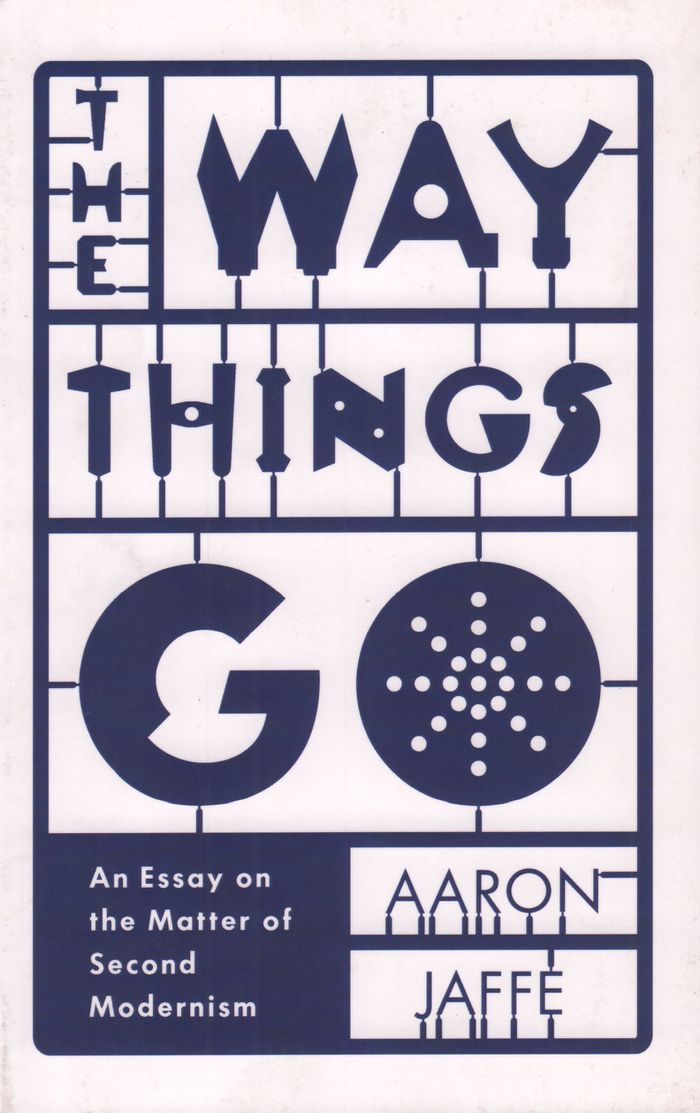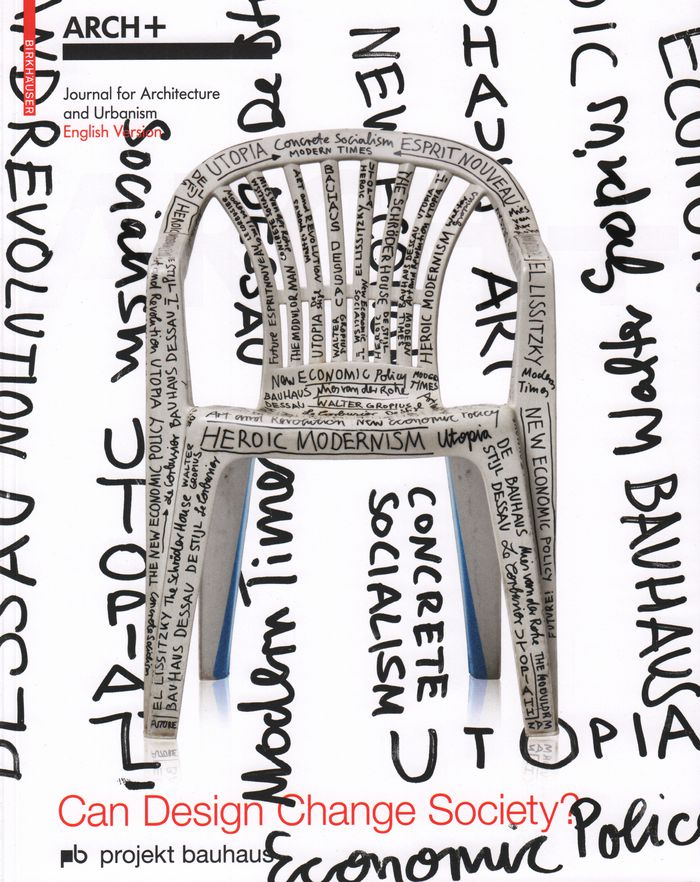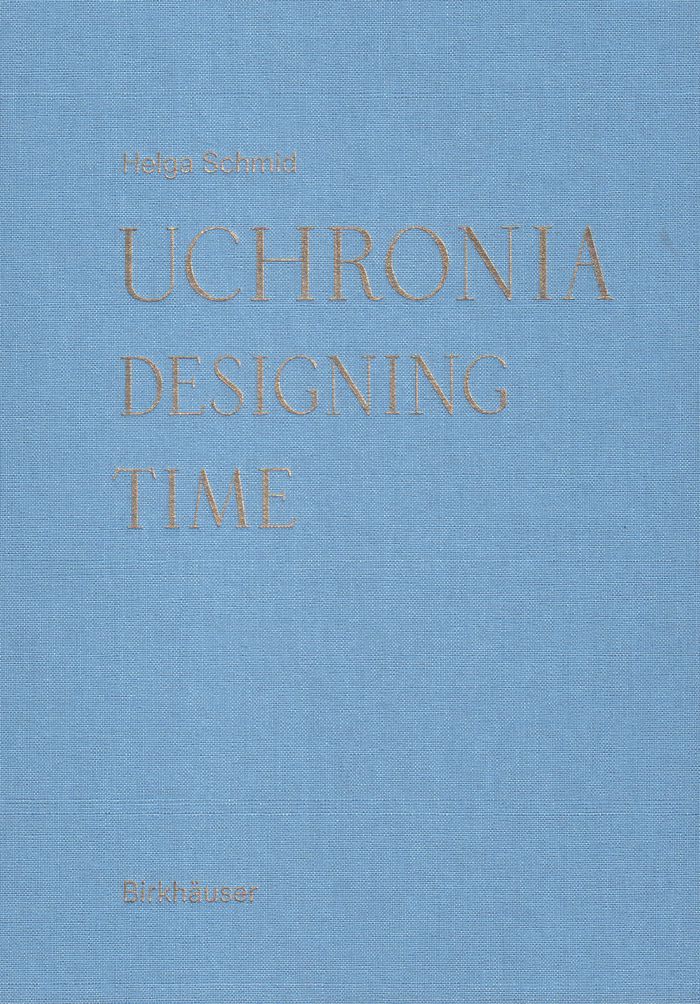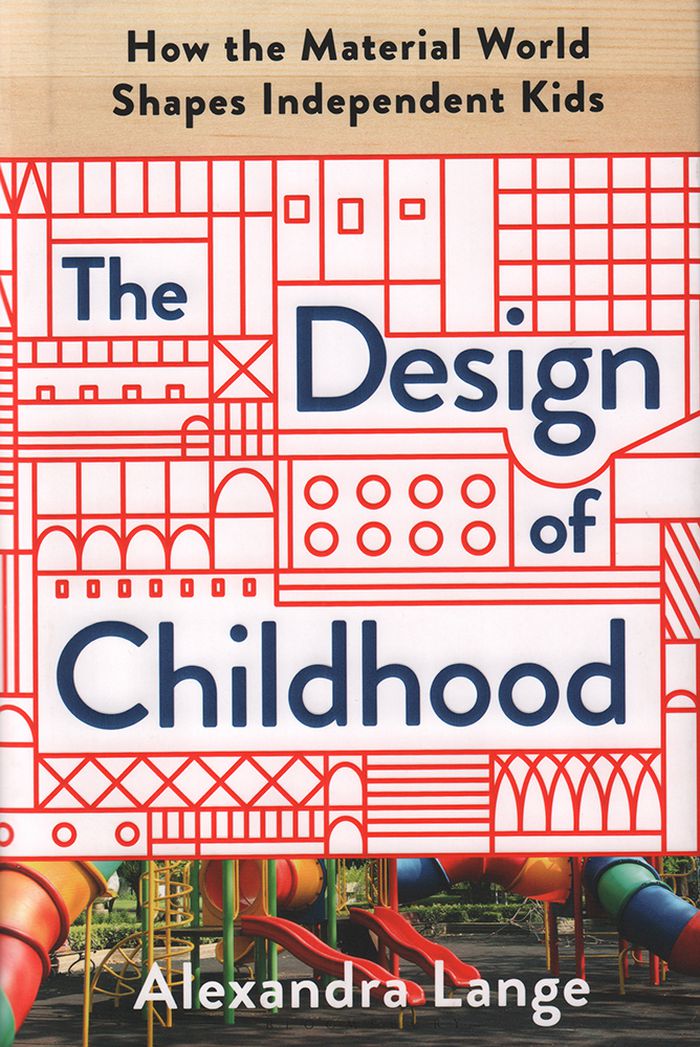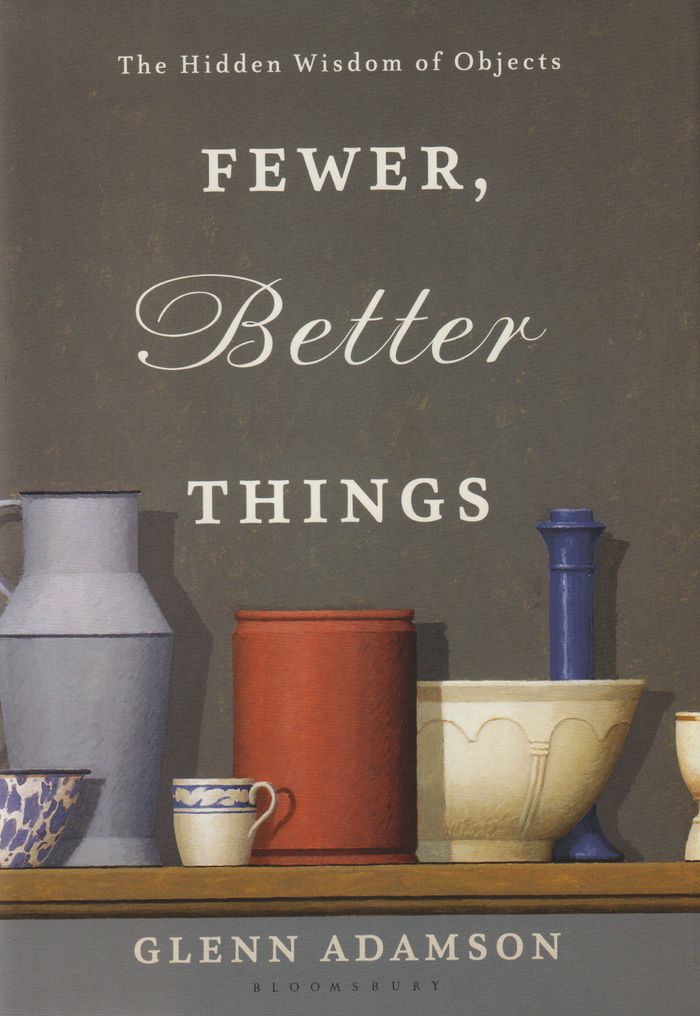$33.95
(available to order)
Summary:
Buffed to a metallic shine; loose fitting, lopsided, or kludgy; getting in the way or getting lost; collapsing in an explosion of dust caught on the warehouse CCTV. Modern things are going their own ways, and this book attempts to follow them. A course of thought about their comings and goings and cascading side effects, The Way Things Go offers a thesis demonstrated via(...)
The way things go: an essay on the matter of second modernism
Actions:
Price:
$33.95
(available to order)
Summary:
Buffed to a metallic shine; loose fitting, lopsided, or kludgy; getting in the way or getting lost; collapsing in an explosion of dust caught on the warehouse CCTV. Modern things are going their own ways, and this book attempts to follow them. A course of thought about their comings and goings and cascading side effects, The Way Things Go offers a thesis demonstrated via a century-long countdown of stuff. Modernist critical theory and aesthetic method, it argues, are bound up with the inhuman fate of things as novelty becoming waste.
Design Theory
$64.95
(available to order)
Summary:
Cet ouvrage questionne une histoire récente du design où la notion d’ornement se donne au cœur de nouvelles logiques de conception et de production. Avec l’avènement du numérique et la redéfinition du rôle de l’ornement, la forme ornementale se donne à présent dans une dimension calculée de morphogenèse : sa dynamique s’ancre dans les processus de croissance de la nature.(...)
Design et merveilleux : de la nature de l'ornement / Design and the wondrous: on the nature of ornament
Actions:
Price:
$64.95
(available to order)
Summary:
Cet ouvrage questionne une histoire récente du design où la notion d’ornement se donne au cœur de nouvelles logiques de conception et de production. Avec l’avènement du numérique et la redéfinition du rôle de l’ornement, la forme ornementale se donne à présent dans une dimension calculée de morphogenèse : sa dynamique s’ancre dans les processus de croissance de la nature. Dans toutes ces réalisations, la dimension générative de la nature a conféré à l’ornement un rôle structurel nouveau. S'appuyant sur une sélection d'œuvres de plus de cinquante artistes, , quatre essais (Marie-Ange Brayer, Spyros Papapetros, Martine Dancer-Mourès et Sophie Fétro), nous donnent à lire et comprendre, l'évolution du design et de l'ornement, à l'ère du numérique. / This volume presents a new narrative of design, situated somewhere between plant life and ornament, nature and artifice. Through essays by several authors it explores the ornament’s role with respect to morphogenesis, by which the object is continually transformed through an evolving dynamic of forms. With the arrival of the digital age, the ornament’s role in design has been greatly modified. No longer a simple motif, it is used as an animated form. At the intersection of information sciences and biology, designers utilise 3D printing to create carefully calculated objects based on organic growth. With contributions by Spyros Papapetros, Marie-Ange Brayer, and others.
Design Theory
$36.00
(available to order)
Summary:
Bringing together the work of over twenty international scholars from various disciplines, "Cultural Histories of the Material World" provides a substantial collection of works that explore materiality and material culture from a historical perspective. These scholars represent some of the most innovative voices in their respective fields, using historiographical lens to(...)
Cultural histories of the material world
Actions:
Price:
$36.00
(available to order)
Summary:
Bringing together the work of over twenty international scholars from various disciplines, "Cultural Histories of the Material World" provides a substantial collection of works that explore materiality and material culture from a historical perspective. These scholars represent some of the most innovative voices in their respective fields, using historiographical lens to chronicle how the field of material culture has operated between multiple disciplines and has grown to prominence in the last two decades, both inside and beyond the academy. Essential reading for the study of material culture and including writing by Bill Brown, Nancy Troy, Horst Bredekamp, Jas Elsner, and Pamela H. Smith, this book builds on the recent proliferation of works that address materiality and offers unified collection of key perspectives on the material turn across the humanities.
Design Theory
$42.00
(available to order)
Summary:
In 2019 it will be the hundredth anniversary of the founding of the Bauhaus. Prompted by this occasion, with "project bauhaus" ARCH+ has undertaken a critical appraisal of the Bauhaus ideas: working for several years, an international group of experts from a wide range of disciplines has investigated the socio-political relevance and emancipatory potential of the Bauhaus(...)
Arch+: Project Bauhaus. Can design change society?
Actions:
Price:
$42.00
(available to order)
Summary:
In 2019 it will be the hundredth anniversary of the founding of the Bauhaus. Prompted by this occasion, with "project bauhaus" ARCH+ has undertaken a critical appraisal of the Bauhaus ideas: working for several years, an international group of experts from a wide range of disciplines has investigated the socio-political relevance and emancipatory potential of the Bauhaus - historically, for today, and for the future. How can design still become effective as a political project? What are the possibilities and problems encountered by universal design in the age of globalization? Can the emancipatory potential of technology still be activated in a digitalized world? The answers to these questions are published here for the first time for an international readership.
Design Theory
Uchronia: designing time
$64.00
(available to order)
Summary:
This book critically investigates our contemporary time crisis. The transformation of society from an agrarian to an industrial, and finally an urbanized way of living and working has created a fundamental change in our understanding of time: a 24/7 mentality. The move from natural time to the digital age leads to a fragmentation of time that deeply affects our daily(...)
Uchronia: designing time
Actions:
Price:
$64.00
(available to order)
Summary:
This book critically investigates our contemporary time crisis. The transformation of society from an agrarian to an industrial, and finally an urbanized way of living and working has created a fundamental change in our understanding of time: a 24/7 mentality. The move from natural time to the digital age leads to a fragmentation of time that deeply affects our daily biological and social rhythm. We need a new approach to time to overcome our temporal system of clocks and calendars. This book investigates a new perception of time by exploring the concept of uchronia, a term derived from the Greek u-topos and meaning 'no time' or 'non-time'. Uchronia is a way of questioning, speculating on and designing new kinds of temporal systems that are more about being in tune than on time.
Design Theory
$36.00
(available in store)
Summary:
In "Design by accident," Alexandra Midal declares the autonomy of design, in and on its own terms. This meticulously researched work proposes not only a counterhistory but a new historiography of design, shedding light on overlooked historical landmarks and figures while reevaluating the legacies of design's established luminaries from the nineteenth century to the(...)
Design by accident: for a new history of design
Actions:
Price:
$36.00
(available in store)
Summary:
In "Design by accident," Alexandra Midal declares the autonomy of design, in and on its own terms. This meticulously researched work proposes not only a counterhistory but a new historiography of design, shedding light on overlooked historical landmarks and figures while reevaluating the legacies of design's established luminaries from the nineteenth century to the present. Midal rejects both linear narratives of progress and the long-held perception of design as a footnote to the histories of fine art and architecture. By weaving critical analysis of the canon of design history and theory together, with special attention to the writings of designers themselves, she draws out the nuances and radical potentials of the discipline—from William Morris's ambivalence toward industry, to Catharine Beecher's proto-feminist household appliances, to the Bauhaus's Expressionist origins, and the influence of Herbert Marcuse on Joe Colombo.
Design Theory
$15.95
(available in store)
Summary:
Quel rapport, autre qu'instrumental ou de « maîtrise », le designer peut-il entretenir avec les techniques qu'il exerce ? Quelles « façons de faire » cultivons-nous quand nous avons de la considération pour les cultures techniques ? Et plus généralement qu'est-ce qui fait culture technique aujourd'hui ? Telles sont les questions dont témoigne cette édition. Sous le nom (...)
Par nos propres efforts : documenter, lire, opérer et montrer les « manières de faire »
Actions:
Price:
$15.95
(available in store)
Summary:
Quel rapport, autre qu'instrumental ou de « maîtrise », le designer peut-il entretenir avec les techniques qu'il exerce ? Quelles « façons de faire » cultivons-nous quand nous avons de la considération pour les cultures techniques ? Et plus généralement qu'est-ce qui fait culture technique aujourd'hui ? Telles sont les questions dont témoigne cette édition. Sous le nom repris d'une publication cubaine des années 1990, le document de restitution articule des documentations de la journée d'étude qui a réuni Caroline Maniaque-Benton et Pierre-Damien Huyghe ; des reproductions du corpus de publications de natures diverses qui documentent et diffusent la technique réunis pour l'occasion ; et des traces de deux ateliers de production : l'un consacré à l'interprétation de la grammaire de l'ouvrage emblématique d'Enzo Mari « Proposta per un'autoprogettazione », l'autre dédié à la réalisation d'un appareil de transformation / fabrication sous l'animation de l'activiste de la low technologie et de l'autonomie énergétique Barnabé Chaillot.
Design Theory
$40.00
(available to order)
Summary:
From building blocks to city blocks, an eye-opening exploration of how children's playthings and physical surroundings affect their development. What do youngsters lose when seesaws are deemed too dangerous and slides are designed primarily for safety? How can the built environment help children cultivate self-reliance? Alexandra Lange reveals the surprising histories(...)
The design of childhood: how the material world shapes kids
Actions:
Price:
$40.00
(available to order)
Summary:
From building blocks to city blocks, an eye-opening exploration of how children's playthings and physical surroundings affect their development. What do youngsters lose when seesaws are deemed too dangerous and slides are designed primarily for safety? How can the built environment help children cultivate self-reliance? Alexandra Lange reveals the surprising histories behind the human-made elements of our children's pint-size landscape. Her fascinating investigation shows how the seemingly innocuous universe of stuff affects kids' behavior, values, and health, often in subtle ways. And she reveals how years of decisions by toymakers, architects, and urban planners have helped--and hindered--American youngsters' journeys toward independence. Seen through Lange's eyes, everything from the sandbox to the street becomes vibrant with buried meaning.
Design Theory
$36.00
(available to order)
Summary:
From the former director of the Museum of Arts and Design in New York, a timely and passionate case for the role of the well-designed object in the digital age. Curator and scholar Glenn Adamson opens "Fewer, Better Things" by contrasting his beloved childhood teddy bear to the smartphones and digital tablets children have today. He laments that many children and adults(...)
Fewer, better things. The hidden wisdom of objects
Actions:
Price:
$36.00
(available to order)
Summary:
From the former director of the Museum of Arts and Design in New York, a timely and passionate case for the role of the well-designed object in the digital age. Curator and scholar Glenn Adamson opens "Fewer, Better Things" by contrasting his beloved childhood teddy bear to the smartphones and digital tablets children have today. He laments that many children and adults are losing touch with the material objects that have nurtured human development for thousands of years. The objects are still here, but we seem to care less and know less about them. "Fewer, Better Things" explores the history of craft in its many forms, explaining how raw materials, tools, design, and technique come together to produce beauty and utility in handmade or manufactured items.
Design Theory
$22.95
(available to order)
Summary:
Three interconnected palimpsest essays recount (1) the backstory of a “meta” font recently updated by Dexter Sinister and used to typeset the Contemporary Condition book series, (2) a broad history of the rationalization of letterforms that considers the same typeface from “a higher point of disinterest,” and (3) a pending proposal for a sundial designed to operate in(...)
Dexer Sinister: Notes on the type, time, letters & spirits
Actions:
Price:
$22.95
(available to order)
Summary:
Three interconnected palimpsest essays recount (1) the backstory of a “meta” font recently updated by Dexter Sinister and used to typeset the Contemporary Condition book series, (2) a broad history of the rationalization of letterforms that considers the same typeface from “a higher point of disinterest,” and (3) a pending proposal for a sundial designed to operate in parallel physical and digital realms. Along the way they contemplate the ambiguous nature of our shared idea of *time* itself.
Design Theory
